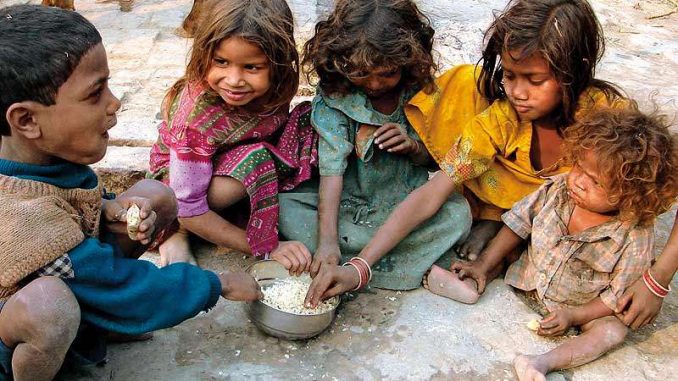
By Selim Raihan
The Sustainable Development Goals (SDGs) of the United Nations are basically a set of 17 goals with 169 targets. Given the wide coverage of SDGs and the weak performances of the South Asian countries under the MDG period, whether these countries will be able to meet the targets of SDGs by 2030 is a big question.
How should we read the SDGs as far as the priorities of the South Asian countries are concerned? In my view, SDG 7 (affordable and clean energy), SDG 8 (decent work and economic growth) and SDG 9 (industry, innovation, and infrastructure) are at the heart of priorities mainly because of the fact that South Asian countries have national priorities aligned with these SDGs, and more importantly, these SDGs have strong linkages with other SDGs. Let us first look at the status of South Asian countries with respect to these three SDGs.
For SDG 7, in terms of access to electricity, the data on the current status of the South Asian countries are rather misleading. Both Bhutan and the Maldives have 100 percent of their population with access to electricity. Both Pakistan and Sri Lanka have the access ratio of over 90 percent. India and Nepal have ratios of 79.2 percent and 85 percent respectively. Bangladesh has the lowest access ratio of 62.4 percent. However, these numbers do not match with the scenarios of severe power shortage and lack of quality electricity supply in countries like Bangladesh, Pakistan, Nepal, Afghanistan, and India. Therefore, effective access to electricity in these countries is much lower than what the official figures suggest.
In case of SDG 8, if we look at the data on the South Asian countries’ growth experience from 1980 to 2015, we will see that there are marked differences among these countries. While Bangladesh and India have been growing at much faster rates, Sri Lanka has been growing at a slower rate, Nepal’s growth has been stagnant, and Pakistan’s growth rate has been on a declining trend. Also, in terms of volatility of the growth rate, Bangladesh has the least volatile growth compared to other South Asian countries. Empirical studies have shown that there are numerous challenges to growth acceleration and maintenance in South Asia, and the current pattern of growth is not sufficient to alleviate poverty and hunger or to achieve other SDGs by 2030. Furthermore, as SDG 8 also involves job creation, all South Asian countries are far behind the target of ensuring decent jobs for all. This is reflected in the fact that among the top five countries in the world with very high proportion of informal employment in the total employment sector, four are from South Asia.
As for SDG 9, a recent study (UNESCAP, 2017, “Asia-Pacific Countries with Special Needs Development Report 2017”, Bangkok) shows that the calculated infrastructural indices of all South Asian countries, except the Maldives, are much lower than the average of developing countries of the Asia-Pacific and a much wider gap is observed when compared with the average of the developed countries of the Asia-Pacific. This indicates the need for a lot of infrastructural investments in the South Asian countries. As for the industrialisation target under SDG 9, while the LDCs are supposed to double their share of manufacturing to the GDP by 2030, all South Asian LDCs, except Bangladesh, are off the track as they are experiencing premature deindustrialisation.
In the cases of SDG 3 (good health and well-being) and SDG 4 (quality education), if we look at the public expenditure on health and education in proportion to the GDP, most of the South Asian countries spend much lower than their East and Southeast Asian counterparts. Also, if we consider SDG 5 (gender inequality) and SDG 8 (decent work and economic growth), there are concerns with respect to the very low level of female labour force participation in most of the South Asian countries, with Nepal being the only exception. Furthermore, countries like Afghanistan, Bangladesh, India, Pakistan and Sri Lanka experienced a sizeable rise in income inequality between 1980 and 2015, which raises further concerns about the future of the targets under SDG 10 (reduced inequalities).
A critical issue with respect to the implementation of SDGs for the South Asian countries would be the volume of resources required to finance such development goals. For example, a recent study by SANEM shows that additional resources required for the implementation of the SDGs in Bangladesh would be 10 percent of GDP in 2017, which can increase to 24 percent of GDP by 2030. It is anticipated that other South Asian countries would also have similarly high figures. Given the changing global scenario, for financing SDGs, South Asian countries will have to rely more on domestic sources, and this is, no doubt, a big challenge. It is also important to note that mere generation of resources would not ensure successful implementation of the SDGs if institutional and governance related aspects are not properly addressed.
What do we learn from the aforementioned discussion? South Asian countries are yet to be on the right track to attain most of the goals under the SDGs. Therefore, there should be renewed efforts and a strong political commitment to address the challenges in implementing these SDGs.
The writer is Professor, Department of Economics, University of Dhaka, Bangladesh, and Executive Director, South Asian Network on Economic Modeling (SANEM). E-mail: selim.raihan@econdu.ac.bd
Source: The Daily Star

Leave a Reply